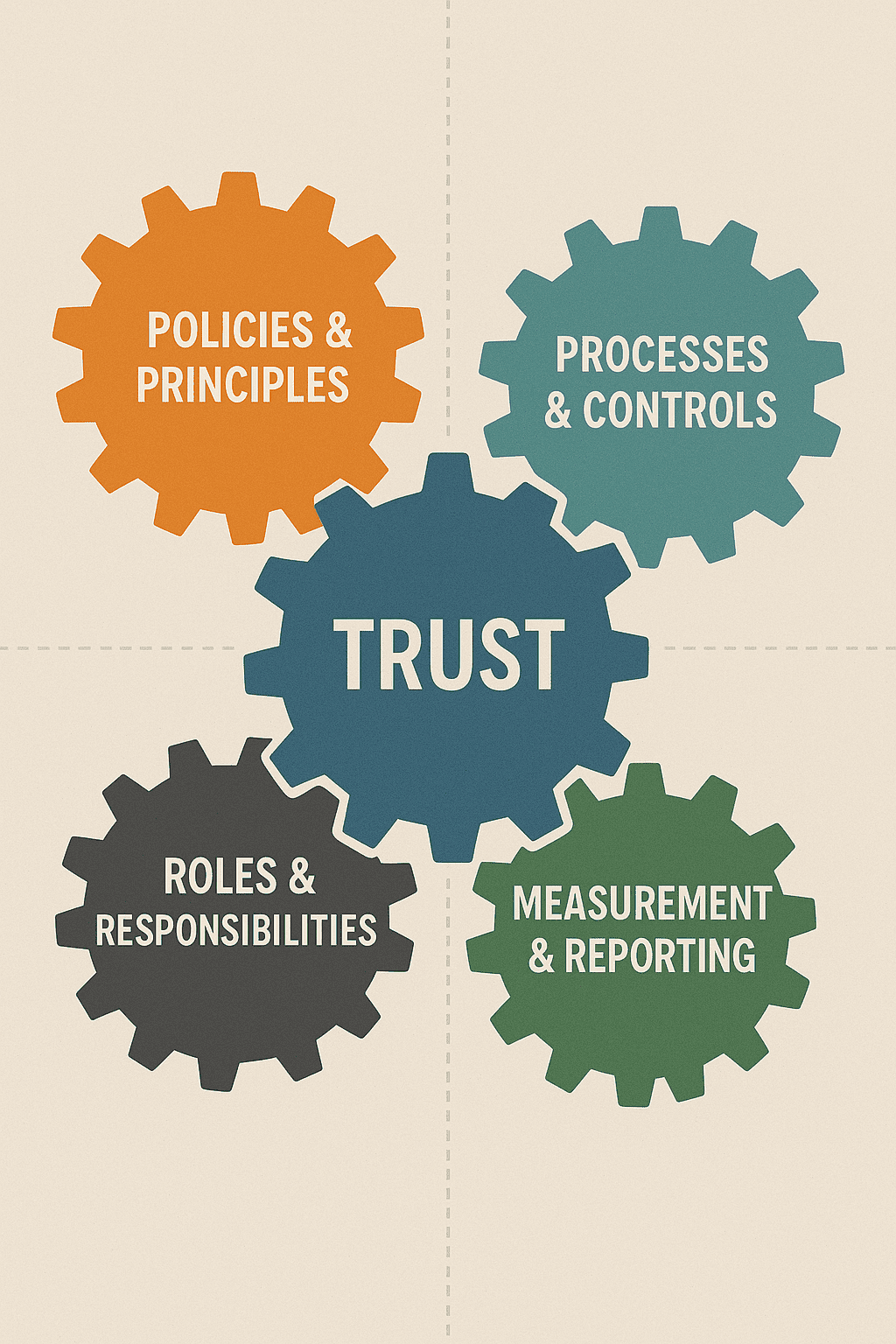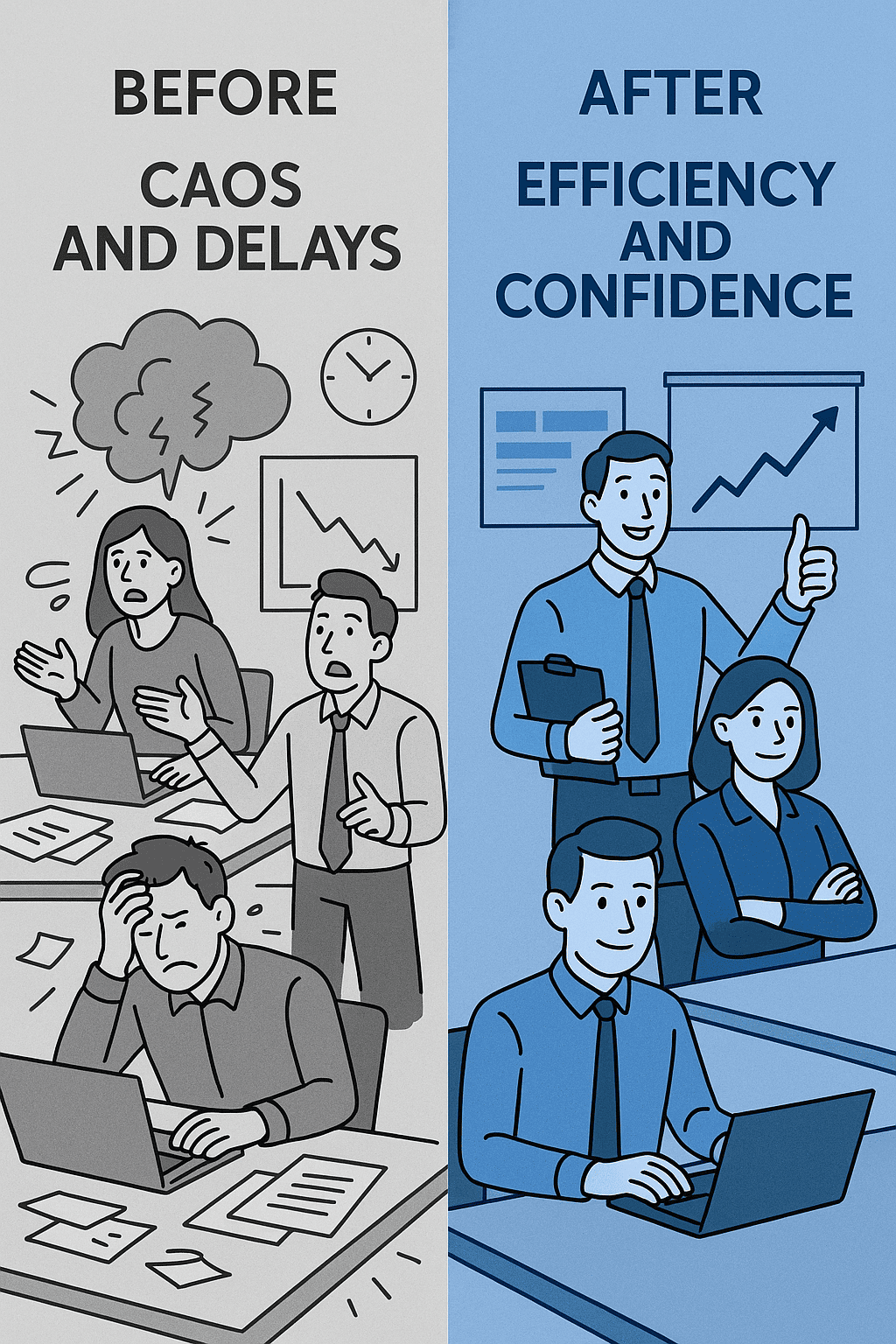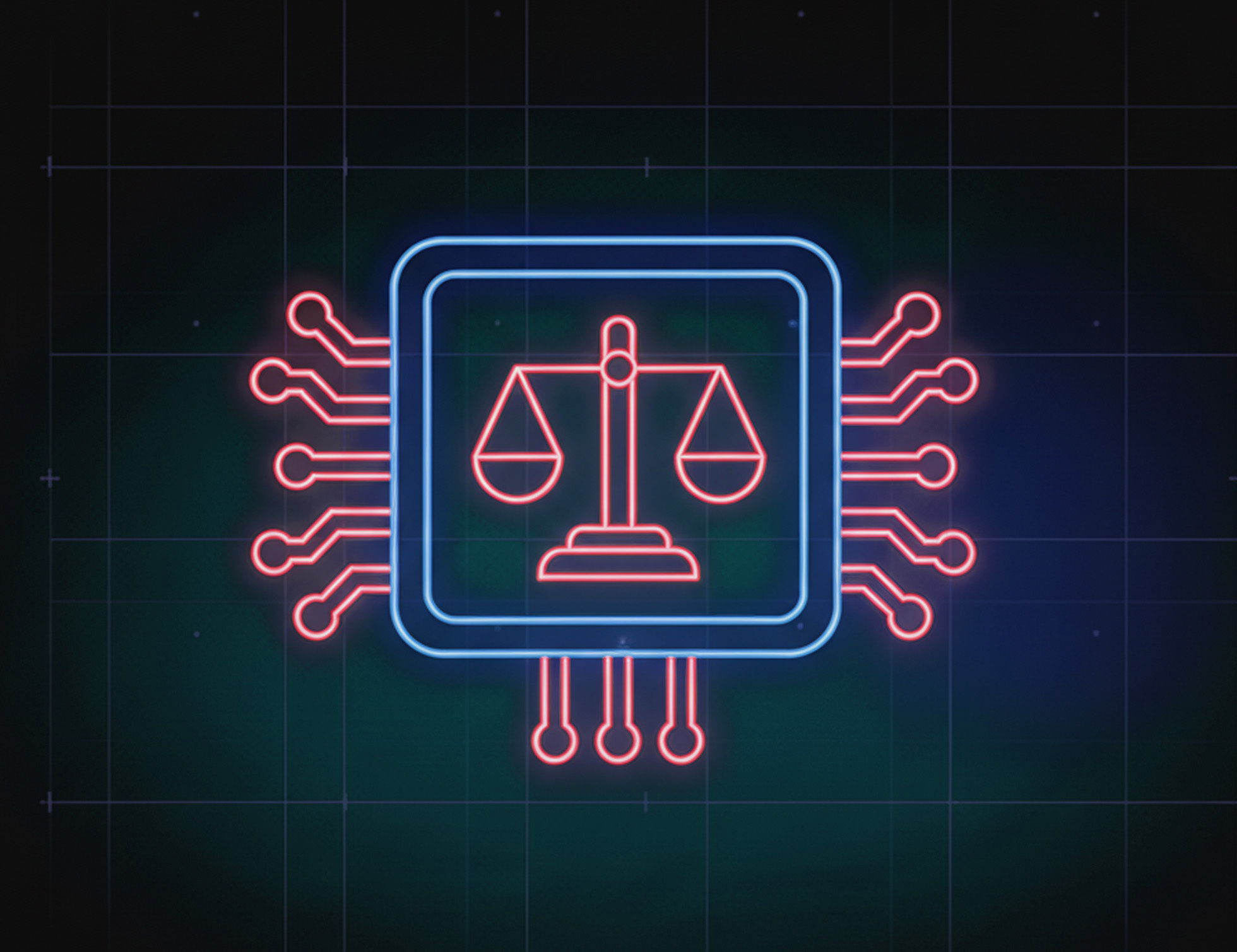Strategic AI & Innovation: Navigating Challenges and Building Resilient Solutions in 2025 with an AI Governance Framework
Artificial Intelligence has moved from experimentation to enterprise-wide adoption, but innovation without safeguards quickly turns risky. That’s why in 2025, the AI governance framework has become one of the most critical priorities for executives. For leaders designing a strategic AI for enterprise, governance is not just compliance — it’s the foundation for resilience, scalability, and trust.
The Current Landscape: AI Adoption with Uneven Maturity
Global reports highlight this maturity gap. As we explained in AI Statistics 2025: Key Market Data & Trends, adoption is growing fast, but governance and ROI remain inconsistent across industries. A McKinsey survey (2024) showed that while 70% of executives report AI pilots, fewer than 15% say these projects create measurable business value. Similarly, Wavestone’s 2025 AI in Action report revealed that organizations struggle with AI governance, ethical safeguards, and security alignment.
This gap signals the need for structured approaches such as an AI governance framework combined with a clear AI roadmap. Without them, innovation risks remaining stuck in pilot projects.
Key Challenges in Strategic AI & Innovation
- Governance and Accountability
Companies face growing pressure to adopt a responsible AI approach, aligning with new regulations. Yet many still lack a formal AI strategy that connects innovation goals with accountability. - Data Quality and Infrastructure
AI systems depend on reliable data. Without proper data governance for AI, organizations risk deploying biased or inaccurate models. Investing in AI architecture best practices ensures that infrastructure can scale safely. - Talent Gaps
Shortages in AI ethics, AI security for enterprises, and compliance talent slow innovation. Upskilling employees and promoting AI training for employees are becoming standard practice. - Regulation and Compliance
The EU AI Act and U.S. federal guidelines are reshaping compliance. Enterprises must map use cases, adopt a responsible AI framework, and prepare for audits with AI risk management tools. - Security and Trust
Generative AI creates risks: hallucinations, IP exposure, adversarial attacks. Here, AI trust and safety policies and LLM security practices are essential.
The AI Governance Framework as a Solution
The AI governance framework helps organizations move beyond pilots by embedding safeguards into the AI operating model. A strong framework includes:
- Policies & Principles: Responsible AI values such as fairness, transparency, and accountability.
- Processes & Controls: Standards for model lifecycle and AI model risk management.
- Roles & Responsibilities: Defining ownership across IT, legal, and compliance.
- Measurement & Reporting: Using an AI maturity model and tracking AI ROI to connect innovation with value.
A 2024 Deloitte study found that companies with a governance framework were twice as likely to move from pilot to production, proving that governance accelerates rather than slows innovation.

Practical Solutions for Each Challenge
Governance and Accountability
- Build an AI center of excellence to oversee governance.
- Adopt standards like the NIST AI Risk Management framework.
- Update policies quarterly, including AI compliance guidelines.
Data Quality and Infrastructure
- Invest in data quality for AI with automated lineage tools.
- Use hybrid models that combine on-premise with cloud to support AI platform strategy.
- Integrate vector database use cases for scalable retrieval-augmented generation (RAGs).
- Launch programs focused on AI skills for leaders.
- Partner with universities for AI transformation talent pipelines.
- Provide AI training for employees across departments.
Regulation and Compliance
- Map use cases against categories in the EU AI Act.
- Conduct third-party audits with AI regulatory compliance checks.
- Use compliance dashboards connected to the AI governance framework.
Security and Trust
- Run adversarial testing to secure generative AI strategy rollouts.
- Apply prompt governance to reduce misuse of LLMs.
- Monitor risks through AI vendor risk management protocols.
Case Example: A Financial Services Firm
In 2024, a North American bank implemented an AI governance framework to manage its portfolio of generative and predictive models.
Challenge: Compliance teams feared exposure to new regulations, while product teams pushed for rapid AI adoption.
Solution: The bank established an AI governance best practices committee, embedded AI risk management into workflows, and added checkpoints for AI model lifecycle management.
Result: Audit prep time dropped 40%, and customer-facing apps launched faster with fewer delays.
This shows that governance clarifies responsibilities and enables innovation instead of blocking it.
Looking Ahead: Building Resilient AI Strategies in 2025
Innovation in AI is accelerating, but risks are too. Companies investing in an AI governance framework today are preparing for the long term. Emerging trends include:
- AI sandbox for enterprise testing of high-risk models.
- MLOps for GenAI to ensure continuous monitoring.
- Greater focus on AI use case prioritization to maximize ROI.
- AI change management as organizations adapt workforce culture.
Conclusion

Strategic AI & Innovation in 2025 is about more than launching pilots—it’s about building resilient systems with trust at the center. The AI governance framework ensures innovation is sustainable, ethical, and compliant.
By addressing data, governance, talent, regulation, and security systematically, enterprises can scale confidently. For leaders, the takeaway is clear: enterprise AI strategy without governance is fragile. With governance, AI becomes a driver of transformation and value.
Turn AI challenges into business opportunities.
Discover how a solid AI governance framework can help your enterprise innovate responsibly and scale with confidence.




